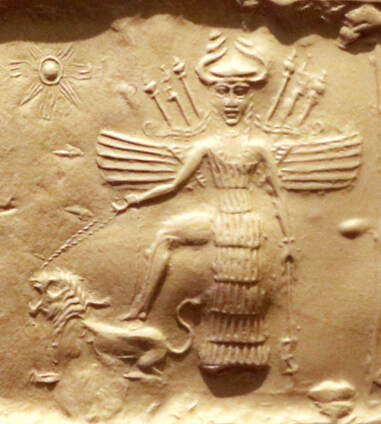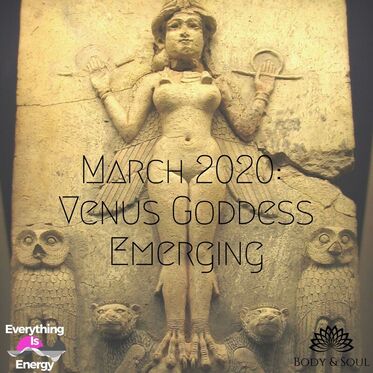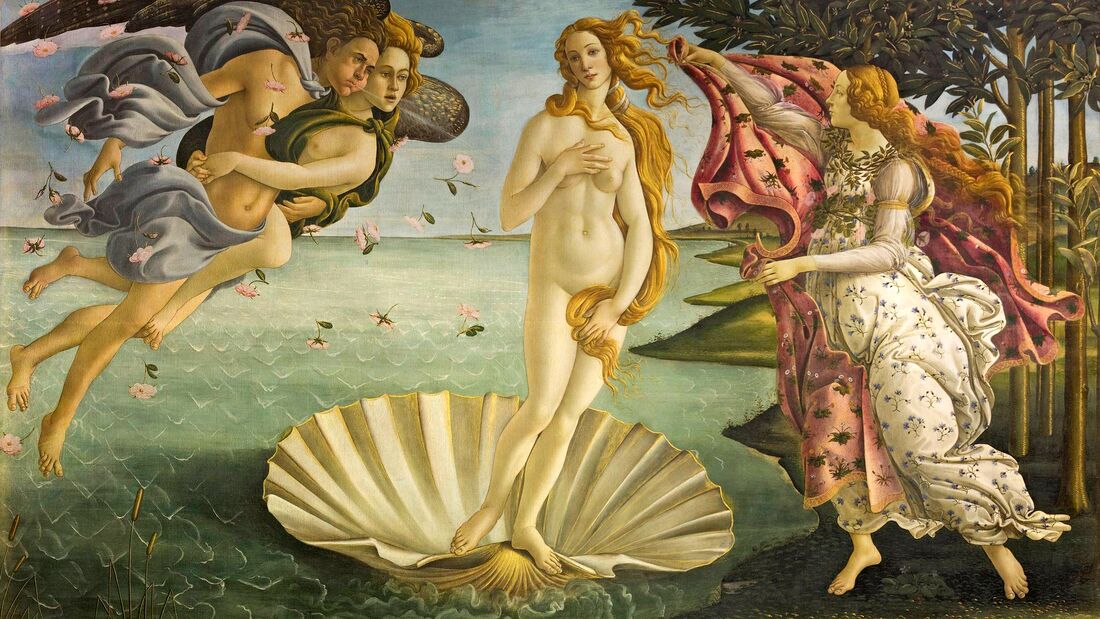
Welcome to March 2020!
Not only is 2020 a potent year (see post and broadcast in January), but March is a potent month. Venus is visible in the sky with the moon from the last days of February into March. Venus is also making a poignant conjunction and square as well as moving into one of her home signs early March.... As if doing an astrological dance to remind us of her presence and her potency. I spent some time in this broadcast exploring the deeper and potentially hidden myths of this Goddess... Venus is one of her names.. She is also Aphrodite and likely ask Ishtar, Inanna and Akkadian. As we consider the convergence of information around these goddesses.. how they are similar in their mystery... in their light and dark aspects.. we touch on a possibility that we are Her.. and that She is here always supporting us.
So who was and is Venus?
Venus was not only the goddess of love according to Greeks, she was Aphrodite to the Romans.. and both goddesses have the same primordial origin story. Below is the depiction I mentioned in the broadcast of Botticelli in Renaissance 1400's. He painted Venus as a goddess arriving from the sea she was birthed in and being greeted by earth/land goddesses. 
I invite you to consider that Venus was also known as Ishtar, (Akkadian), and Sumerian Inanna. The following excerpt is adapted from Encyclopedia Britannica, and I found it interesting to share in it's own rite:
In Mesopotamian religion, Inanna was goddess of war and sexual love. Ishtar is the Akkadian counterpart of the West Semitic goddess Astarte. Inanna, an important goddess in the Sumerian pantheon, came to be identified with Ishtar, but it is uncertain whether Inanna is also of Semitic origin or whether, as is more likely, her similarity to Ishtar caused the two to be identified. In the figure of Inanna several traditions seem to have been combined: she is sometimes the daughter of the sky god An, sometimes his wife; in other myths she is the daughter of Nanna, god of the moon, or of the wind god, Enlil. In her earliest manifestations she was associated with the storehouse and thus personified as the goddess of dates, wool, meat, and grain; the storehouse gates were her emblem. She was also the goddess of rain and thunderstorms—leading to her association with An, the sky god—and was often pictured with the lion, whose roar resembled thunder. The power attributed to her in war may have arisen from her connection with storms. Ishtar’s primary legacy from the Sumerian tradition is the role of fertility figure; she evolved, however, into a more complex character, surrounded in myth by death and disaster, a goddess of contradictory connotations and forces—fire and fire-quenching, rejoicing and tears, fair play and enmity. The Akkadian Ishtar is also, to a greater extent, an astral deity, associated with the planet Venus.
0 Comments
Leave a Reply. |
AuthorLisa Marie Haley Archives
July 2024
Categories |
All information on this website is Copyright © 2013 - 2024 Lisa Marie Haley



 RSS Feed
RSS Feed